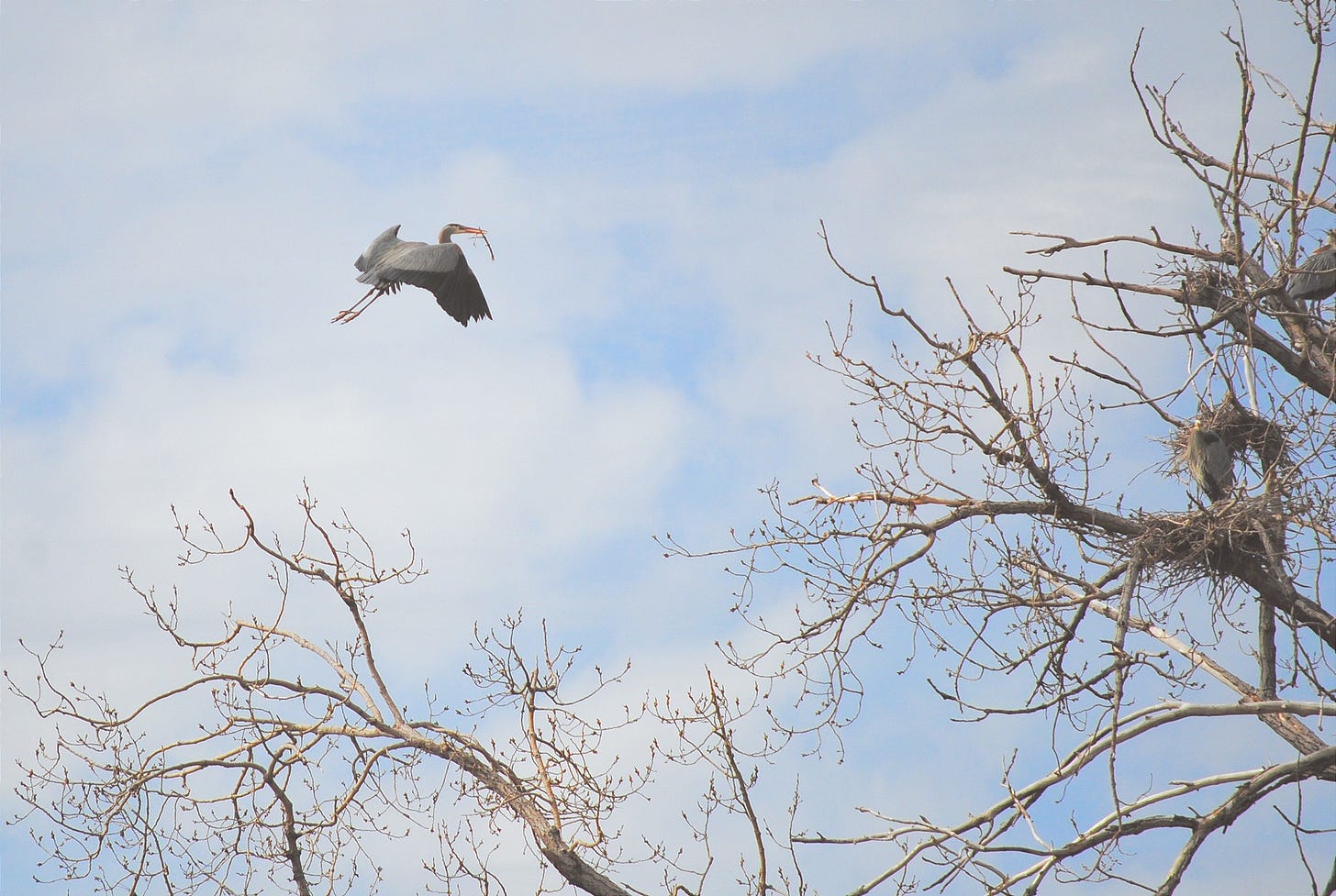Arriving at the Rookery
Herons have started claiming nesting territory on the Mississippi River
A sure sign of spring in Minneapolis is the early March arrival of Great Blue Herons at their rookery site which is located on a pair of sandbar islands just north of the downtown. Herons are colonial nesters, constructing multiple nests high up in large trees, in this case, cottonwood trees.
These islands in the River provide protection from predators such as raccoons and remain largely undisturbed by human activity despite being in such an industrial area. People viewing the activity from the river banks are a safe enough distance away for the herons to tolerate. This is a very unique place for urban nature lovers to watch the herons’ nesting season as it unfolds throughout the next few months.
As more Great Blues arrive in the coming weeks, the courtship displays and nest building intensifies. Much of this revolves around the male herons collecting sticks to bring to the nest to present to the females to arrange.
Great Blue Herons lay three to five eggs in early spring and will incubate for 25-30 days. Both parents take turns feeding the newly hatched chicks partially regurgitated food and one parent will stay with them at the nest until they are a month old. Then they both will go out to gather food for the rapidly growing chicks who will be ready to finally leave the nest at 10 to 12 weeks.
Looking south from the rookery is downtown Minneapolis. This unique rookery in the heart of a major metropolitan area shows how resilient nature can be and how special it is to have a spectacular display of nature so easily observable to an urban population.
Additional notes: This rookery was chosen by the herons as a replacement for a previous rookery further up river that was destroyed by a tornado in May 2011.
For a wonderful book on the Great Blue Heron, both in breeding and non-breeding seasons, consider purchasing Rebecca Field’s The Great Blue Heron - in the Rookery and Beyond.








That's a great sight. I don't know if Grey Herons here in Europe have the same habit of nesting colonially, I would love to see a rookery like this someday!
Fantastic views of a wonderful bird.